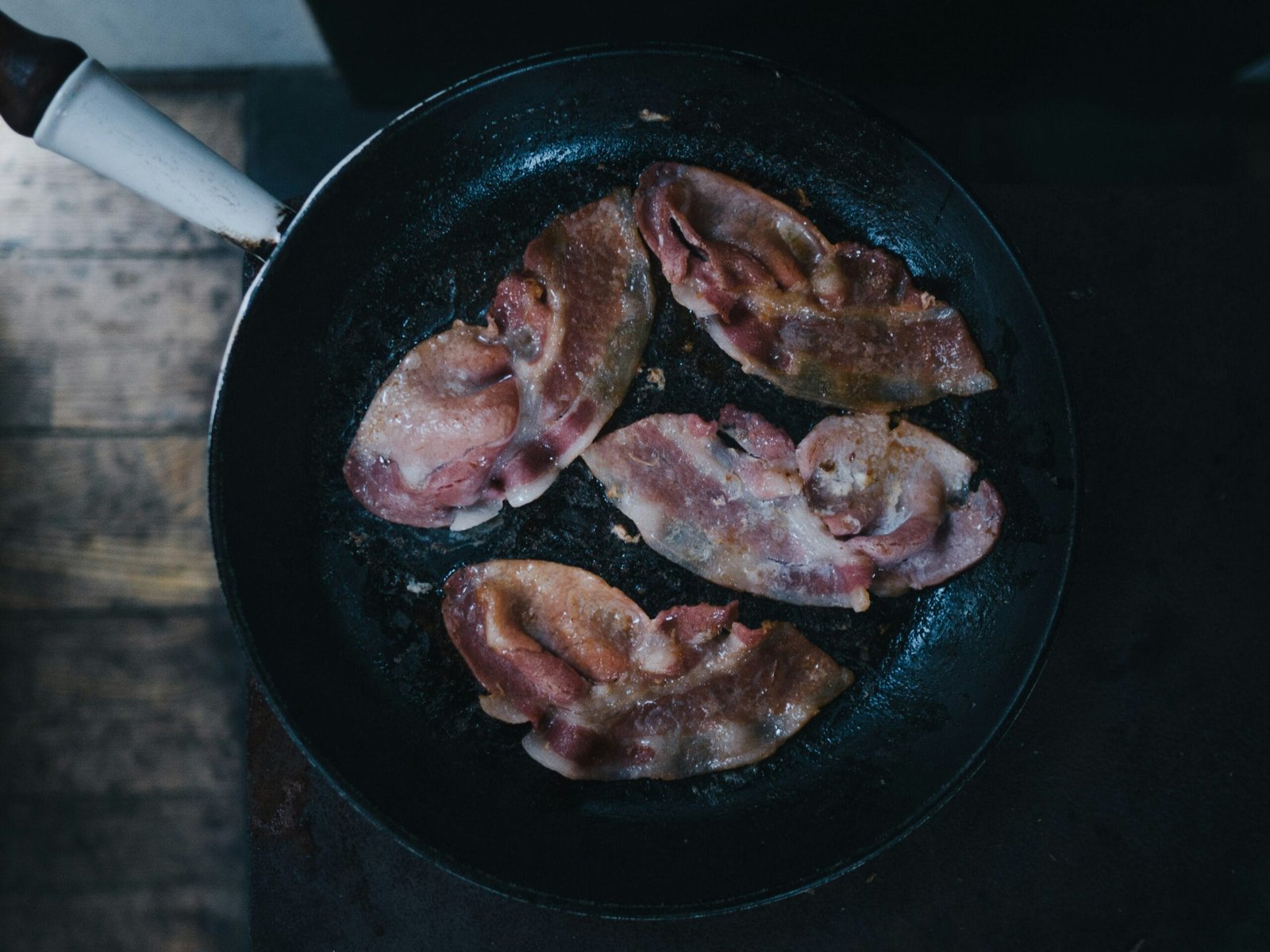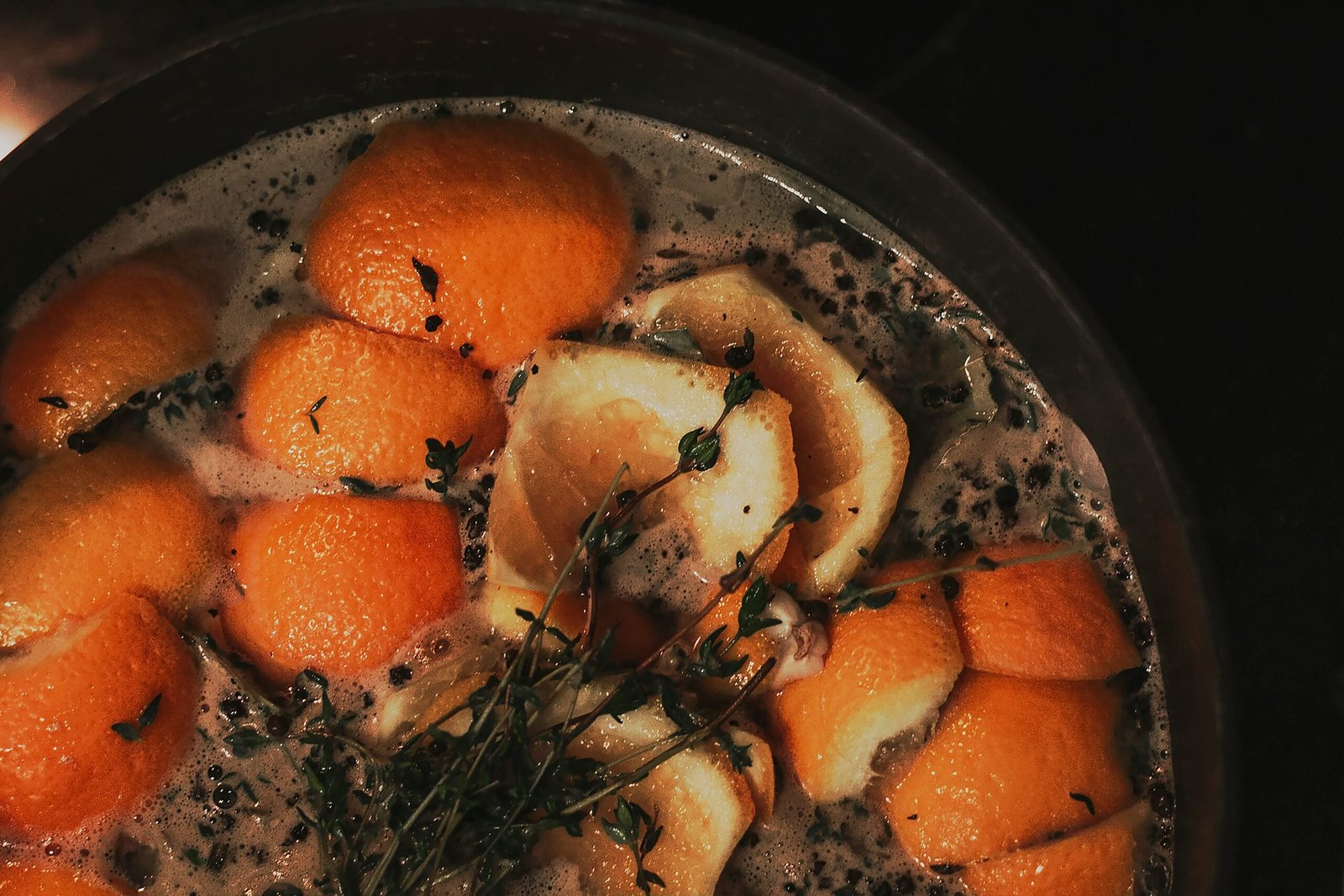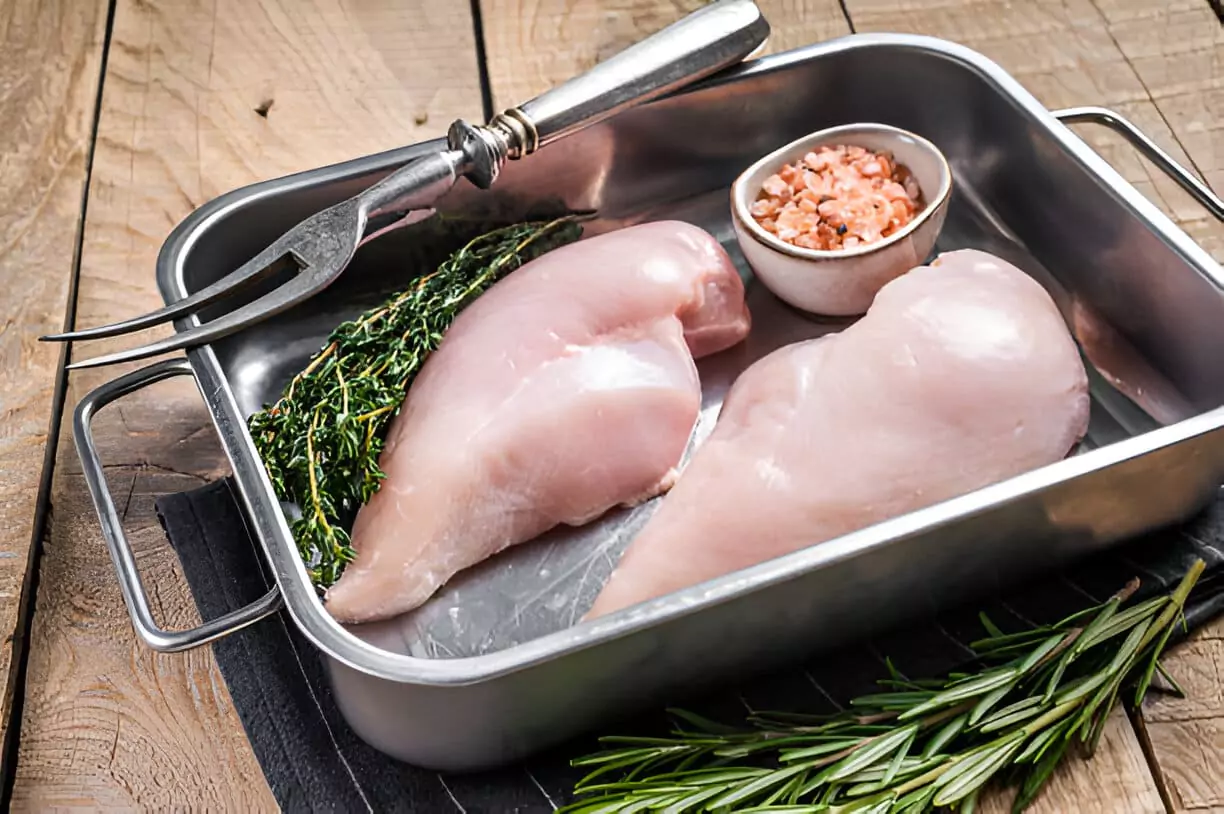Introduction to Broiling and the Need for Substitutes
Broiling is a cooking technique that is often overshadowed by other methods, yet it offers unique advantages in food preparation. This high-heat cooking method involves placing food under a heat source, typically in an oven, allowing for a quick and efficient way to cook meats, vegetables, and even certain desserts. The intense, direct heat can create a delicious, caramelized crust on food, enhancing the overall flavor profile while ensuring that the interior remains moist and tender.
Despite its benefits, many home cooks may find themselves in situations where a dedicated broiler pan is unavailable or impractical. For instance, during gatherings or cooking for larger groups, a traditional broiler pan may not provide enough cooking space. Additionally, if your broiler pan is currently in use, or if it has been misplaced, this may leave you wondering about viable substitutes.
The need for alternatives becomes apparent in these scenarios. Fortunately, most kitchens are equipped with a variety of items that can effectively serve as substitutes for a broiler pan. Common kitchen tools such as cooling racks, baking sheets, or even cast-iron skillets can often be utilized in place of a dedicated broiler pan. These items can withstand high heat and facilitate adequate airflow around the food, ultimately achieving similar desired results.
Understanding the essentials of broiling and the various substitutes can empower home cooks to optimize their culinary skills regardless of equipment availability. By promoting creativity and resourcefulness in the kitchen, one can navigate the challenges that arise from not having a specific cooking tool at hand, ensuring that delicious meals are always within reach.
Understanding the Role of a Broiler Pan
A broiler pan is a specialized cooking tool designed to harness the intense heat of a broiler, which is commonly found in most ovens. The pan typically consists of two components: a shallow, slotted top that allows grease and drippings to escape during cooking, and a deeper bottom tray that collects these excess fats. This ingenious design not only facilitates even cooking but also contributes to healthier meal preparation by reducing the amount of fat retained in the food.
The primary function of a broiler pan is to allow food to be cooked rapidly at high temperatures, making it ideal for broiling meat, poultry, and seafood. This method results in a caramelized exterior while locking in moisture, yielding flavorful and juicy results. The slotted top encourages a circulatory airflow, which aids in evenly browning the food while minimizing the risk of sogginess from accumulated fats.
Common uses of a broiler pan in home cooking extend beyond merely broiling. It can be employed for roasting vegetables, baking fish, or even to create a makeshift rack for items that benefit from the high-heat exposure. The versatility of a broiler pan is often undervalued, as many cooks may overlook its potential in their everyday culinary endeavors. Understanding the distinctive features and capabilities of a broiler pan is crucial for transitioning to efficient substitutes when this particular piece of cookware is unavailable.
Recognizing how the design optimizes cooking enables home chefs to make informed choices about alternative cookware. With a little creativity, everyday kitchen items can effectively replace a broiler pan while still achieving similar cooking results. By keeping in mind the importance of fat drainage and even heat distribution, one can explore various substitutes that are likely already present in your kitchen.
Common Kitchen Items That Work as Broiler Pan Substitutes
Broiling is a cooking technique that allows food to be exposed to direct heat, which can be effectively achieved using various common kitchen items. One of the most versatile substitutes is a rimmed baking sheet, which can be utilized effectively for broiling tasks. To use this item, place the food on the sheet and adjust the oven rack to the highest position to ensure the food receives proper heat exposure. Additionally, the rim helps to contain any drippings, minimizing mess in the oven.
Another excellent alternative is the cast iron skillet. This kitchen essential not only retains heat efficiently but also distributes it evenly across the surface, ensuring that food cooks thoroughly. For broiling, preheat the skillet in the oven for a few minutes before placing the food inside, allowing for optimal searing. It is essential to handle the skillet with care, as it will become very hot during the broiling process.
Lastly, aluminum foil can serve as an effective broiler pan substitute. When using aluminum foil, create a makeshift tray by folding it into a flat sheet or cradling it into a shallow bowl shape. This allows drippings to be caught while the food cooks. Make sure to use heavy-duty aluminum foil to avoid tearing, and position it on the oven rack to allow sufficient air circulation. When broiling with any of these substitutes, careful monitoring is crucial to prevent overcooking or charring. Using these items not only enables successful broiling but also showcases the practicality of everyday kitchen tools, offering convenience while achieving delicious results.
Pros and Cons of Each Substitute
When it comes to replacing a broiler pan, there are various substitutes that can be utilized in the kitchen, each with its own advantages and disadvantages. It is essential to consider these factors to enhance your cooking experience while ensuring food is prepared safely and effectively.
Metal Baking Sheet: One popular alternative is a metal baking sheet. Its advantages include high heat resistance and versatility, as it can be used for various cooking methods beyond broiling. However, it often lacks a raised edge, leading to potential spillage during high-heat cooking. Additionally, without a rack, grease can pool, making food less crispy and possibly affecting flavor.
Cast Iron Skillet: A cast iron skillet is another practical option for broiling. Not only does it retain heat exceptionally well, allowing for even cooking, but it also adds a distinct flavor to dishes. However, its weight can be a drawback; lifting the skillet in and out of the oven may pose a challenge, especially for those not accustomed to using heavy cookware. Also, seasoning must be maintained to prevent rusting, which can require extra effort.
Aluminum Foil: Utilizing aluminum foil as a broiler pan substitute is convenient and readily available. Foil can be shaped into trays that hold juices and drippings effectively. However, it may not provide adequate support for heavier items, leading to the risk of collapsing. Moreover, using foil on an open flame can result in health concerns due to potential chemical leaching.
Grill Pan: A grill pan offers a fantastic way to achieve grill marks indoors. It encourages fat drainage, promoting healthier cooking. However, while it achieves desirable results, it may take longer to heat up and may not accommodate larger portions as a traditional broiler pan would.
Each substitute presents unique strengths and weaknesses. Understanding these aspects will help you choose the ideal option based on your specific culinary needs.
Tips for Safely Broiling Without a Dedicated Broiler Pan
Broiling is a cooking method that utilizes high heat from above to cook food quickly, producing delicious and crispy results. However, if you find yourself without a dedicated broiler pan, there are effective alternatives you can use while maintaining safety in the kitchen. The following tips will help you broil food safely, ensuring delicious outcomes without the need for specialized equipment.
First and foremost, it is essential to choose materials that can withstand high temperatures. For instance, metal pans, such as baking sheets or cast iron skillets, are excellent substitutes. Avoid using glass or plastic containers, as these materials can shatter or warp under intense heat. If you opt for aluminum foil, be cautious with its use, as it can easily burn. A good practice is to line a metal baking sheet with foil while leaving an appropriate space around the edges for airflow.
To prevent smoke and minimize the risk of burning food, always monitor your broiling process closely. Keep an eye on your food’s progress and adjust the heat level if necessary. When broiling, it’s crucial to position the oven rack correctly—generally, food should be placed about 3 to 6 inches from the heat source, depending on the type of food being cooked. This distance helps to achieve even cooking without excessive flare-ups.
Even cooking is key to successful broiling. To achieve this, cut food into uniform sizes, allowing heat to circulate evenly. Turn items midway through the cooking process, particularly thicker cuts of meat, to ensure consistent browning and reduce the risk of burning. Finally, using a meat thermometer can help you monitor temperature accurately, giving you peace of mind regarding food safety.
By following these practical tips, you can successfully enjoy the benefits of broiling without a dedicated pan, while ensuring your cooking experience remains safe and enjoyable.
Techniques to Improve Broiling Results
Broiling is a high-temperature cooking method that can yield deliciously caramelized and tender results when executed correctly. To ensure the best outcomes, several techniques can be employed that enhance the broiling process, particularly when using alternatives to traditional broiler pans.
One effective technique is marinating the meat before broiling. Marinating not only infuses flavor but also adds moisture, which can be especially beneficial when using substitutes like baking sheets or cast iron skillets. A marinade typically consists of acidic components such as vinegar or citrus juice, which help to tenderize the meat while imparting flavor. It is advisable to allow the meat to marinate for at least 30 minutes; longer for denser cuts. This step can transform simple broiling into a robust culinary experience.
Using aluminum foil is another practical approach to improve broiling results. Foil can be fashioned into a small tray that catches drippings and minimizes mess while ensuring even cooking. Furthermore, wrapping vegetables or delicate items ensures they do not overcook or dry out under the intense heat of the broiler. Consider using shiny aluminum foil for its reflective properties, which can help enhance browning. It also acts as a protective barrier against direct heat, helping to foster a more controlled cooking environment.
Another beneficial practice is to preheat both the broiler and the cooking surface. This ensures that the food will begin to sear immediately upon contact, leading to better flavor development and texture. For items like fish or chicken, placing them relatively close to the heating element will encourage faster cooking; however, vigilance is necessary to prevent burning. Employing a meat thermometer can also serve to ensure that cooked food reaches the desired internal temperature without excessive charring.
In conclusion, by incorporating these techniques—marinating meats, utilizing aluminum foil, and preheating surfaces—you can significantly improve your broiling results, even when resorting to substitutes in lieu of traditional broiler pans. These methods foster a rewarding home cooking experience while achieving flavorful and tender outcomes. Practical adjustments transform broiling into a reliable and enjoyable cooking technique.
Recipes to Try with Broiler Pan Substitutes
Utilizing broiler pan substitutes can be an excellent way to expand your culinary repertoire while utilizing items already present in your kitchen. Below is a selection of easy yet delicious recipes that illustrate how these substitutes can effectively aid in broiling various foods.
One simple and tasty dish to try is the broiled lemon herb chicken. For this recipe, you can use a baking sheet lined with aluminum foil as your broiler pan substitute. Begin by marinating chicken breasts in a mixture of olive oil, fresh lemon juice, chopped garlic, and your choice of herbs such as rosemary or thyme. Preheat your oven’s broiler, arrange the chicken on the foil-lined sheet, and cook for about 6-8 minutes per side until golden brown and cooked through. This method not only ensures even cooking but also retains the moisture of the chicken.
If you desire a vegetarian option, consider broiled vegetable skewers. Using a regular oven-safe rack placed atop a baking sheet can work wonderfully. Cut your favorite vegetables, such as bell peppers, zucchini, and cherry tomatoes, into uniform pieces. Marinate them in balsamic vinegar, olive oil, and Italian seasoning for added flavor. Assemble them onto skewers and place the rack over the sheet to catch any drips. Broil for approximately 10-12 minutes, turning halfway through to achieve a delightful char.
Another easy recipe is the classic broiled salmon. A cast-iron skillet can serve as your substitute here. Simply season salmon filets with salt, pepper, and a drizzle of olive oil. Place the skillet under the broiler for around 6-8 minutes, allowing the skin to get crispy and the fish to flake perfectly. This method not only enhances the flavor but also allows for simple presentation and cleanup.
These recipes exemplify the versatility and effectiveness of broiler pan substitutes in creating delicious meals. By integrating these techniques into your cooking, you can enjoy delightful dishes without the need for specialized equipment.
Reader Testimonials and Experiences
In the culinary world, innovation often emerges from necessity. Many home cooks have shared their experiences of using broiler pan substitutes, and their creative solutions provide valuable insight into effective alternatives. One reader, Jane, recounted her experience with a simple baking sheet. She found that lining the sheet with aluminum foil not only minimized cleanup but also distributed heat evenly, allowing her broiled chicken to cook thoroughly and develop a golden-brown crust. This method proved both efficient and successful, inspiring her to experiment with various seasonings during the broiling process.
Another enthusiast, Tom, shared his story of using a cast-iron skillet as a makeshift broiler pan. According to Tom, the skillet’s ability to retain heat played a crucial role in achieving a perfectly cooked broiled fish. He noted that preheating the skillet in the oven before adding the fish allowed for an initial sear, which locked in moisture and flavor. This approach not only transformed his cooking but also encouraged him to encourage other readers to think outside the box when it comes to kitchen tools.
Moreover, Emily, an avid cook, reflected on her success when employing a wire rack atop a baking sheet. This method created enough space for air circulation, allowing the food to crisp nicely without becoming soggy. She emphasized the importance of monitoring cooking times, as substitutes can behave differently than traditional broiler pans. These personal anecdotes highlight the ingenuity and adaptability of cooks who face the challenge of limited kitchen equipment.
Collectively, these testimonials illustrate that with a bit of creativity, traditional kitchen obstacles can be transformed into opportunities for culinary experimentation. The experiences of home cooks not only add authenticity to the conversation surrounding broiler pan substitutes but also inspire others to explore their own kitchen alternatives.
Conclusion: Embracing Kitchen Creativity
In the world of culinary arts, resourcefulness and adaptability are key traits that every home cook should cultivate. The ability to think outside the box and find effective broiler pan substitutes from items readily available in your kitchen can elevate your cooking experience. Whether it’s using a simple baking sheet for roasting vegetables or a cast iron skillet for broiling meats, these alternatives not only ensure that your cooking remains uninterrupted but also allow for creative expression in the kitchen.
Embracing these substitutes can lead to discovering new methods and enhancing existing recipes. For example, utilizing an oven-safe dish or even a wire rack set atop a baking sheet can mimic the function of a traditional broiler pan effectively. By experimenting with different tools, one may stumble upon innovative cooking techniques that keep meals exciting and delicious.
Moreover, sharing experiences and tips within a cooking community can significantly enrich one’s culinary journey. We encourage readers to participate actively by sharing their unique broiler pan substitutes and any kitchen hacks they may have discovered. Engaging in a dialogue about various alternatives not only strengthens community bonds but also expands our collective knowledge, bringing new ideas to the table.
As you explore these options, remember that cooking is as much about the joy of creation as it is about sustenance. Finding that perfect broiler pan substitute is not just about improvisation; it’s a fantastic opportunity to showcase creativity and personal flair. Embrace the challenge, and let your kitchen become a canvas for experimentation. We look forward to hearing about your inventive approaches in the comments below!



